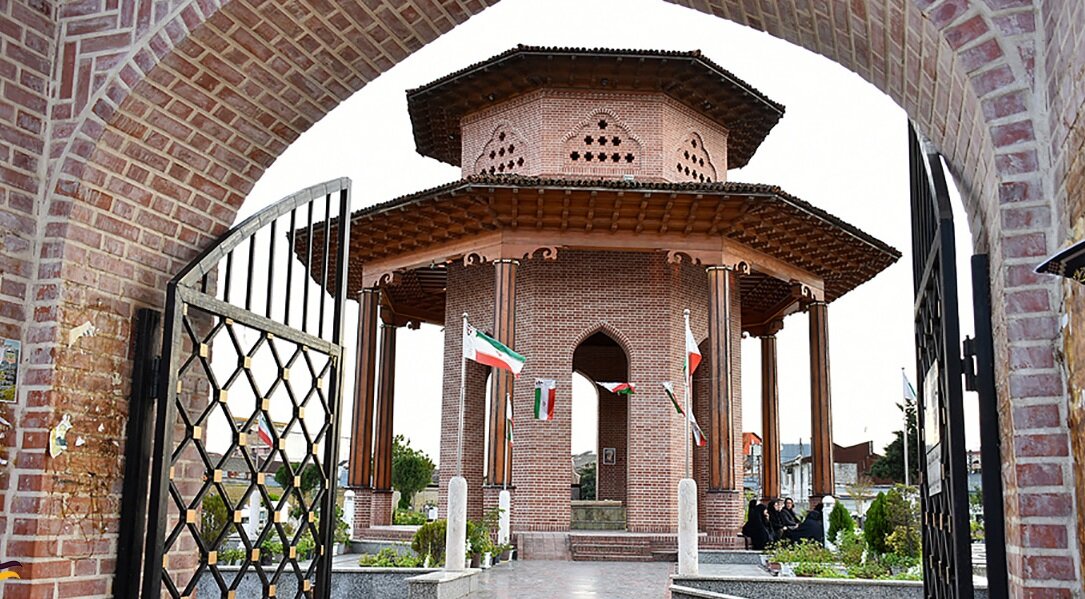Under-the-radar destinations: Mirza Kuchak Khan Mausoleum

TEHRAN - The mausoleum of Yunes Ostadsarai, famously known as Mirza Kuchak Khan Jangali or Commander of Jangal (1880-1921), serves as an intriguing site for tourists exploring Rasht, the capital of Gilan province, northern Iran.
Initially constructed during the Pahlavi era, this complex underwent expansion and additional construction, notably a building dedicated to his memory and the portal, post the Islamic Revolution of 1979.
Mirza Kuchak Khan Jangali, a prominent figure in the Persian Constitutional Revolution, was a key leader of the Jangal movement. He vehemently fought against foreign intrusion and sought Iran's independence. The uprising, commencing in 1914, persisted against both domestic and foreign adversaries until 1921, concluding upon Mirza's demise.
The commemorative structure, located between the mausoleum and Soleiman Darab cemetery, is aesthetically simple yet architecturally splendid.
Designed as a regular octagon, a prevalent geometric form in Iranian architecture, it boasts eight elegant columns adorned with wooden capitals encircling the mausoleum.
The construction predominantly employs local materials like bricks, tiles, clay, and wood, blending harmoniously with the lush greenery and ancient trees in the vicinity, evoking the essence of the forests and resonating with the free-spirited nature of the revolutionary leader.
Adjoining the mausoleum of Mirza Kuchak Khan, lie the graves of the Jangal movement fighters, their names engraved on individual tombs. Additionally, the site hosts the mausoleum of Shivan Fumani, a revered poet of the region, along with other notable personalities from the area.
This site, coupled with nearby attractions like the Kolah Farhangi Palace, the Mirza Kuchak Khan House Museum, and the Ganjineh Museum, stands as a prominent tourist destination in Rasht.
A fascinating historical fact revolves around the burial of Mirza Kuchak Khan's head, initially separated from his body and interred in Tehran. Eventually, it found its resting place adjacent to his statue in Khanqah Gilvan, located on the border of Gilan and Ardabil provinces, a staggering 44 years after its initial burial. Subsequently, both the head and statue were relocated to their current location at the mausoleum.
Gilan is also known for its beautiful natural scenery and exotic wildlife. The stunning waterfront of the Anzali lagoon, the majestic Talesh mountains, and the verdant rice paddies are just a few of the natural wonders that attract visitors to the region.
The lush green province, which is bounded by the Caspian Sea, is a historically and culturally rich region that offers visitors a diverse range of experiences. With its mild climate, lush greenery, majestic mountains, and stunning coastline, Gilan is becoming an increasingly popular tourist destination in northern Iran.
It offers plenty of activities for tourists. Hiking and trekking in the mountains, birdwatching in the lagoons, camping near the waterfalls and rivers, and sightseeing in the beautiful natural scenery are all popular activities for visitors. Rasht, the provincial capital, has long been a weekend escape for residents of Tehran who are looking to sample the famous local cuisine and hoping for some popular action–it's the largest and wettest town in the northern region.
Gilan’s traditional cuisine is famous for its diverse flavors, rich textures, and unique ingredients. The traditional dishes of the region include the Gilaki kebab, Mirza Ghasemi (smoked eggplant dish), and Baghala Ghatogh (a dish made with fava beans). The province's local handicrafts, including pottery, weaving, and woodcarving, are also worth exploring.
Gilan provides visitors with various accommodation options, including hotels, guesthouses, and traditional houses that have been converted into accommodations for tourists. The province is easily accessible by land, sea, and air. The Rasht international airport provides direct flights to major cities in Iran.
AFM
Leave a Comment